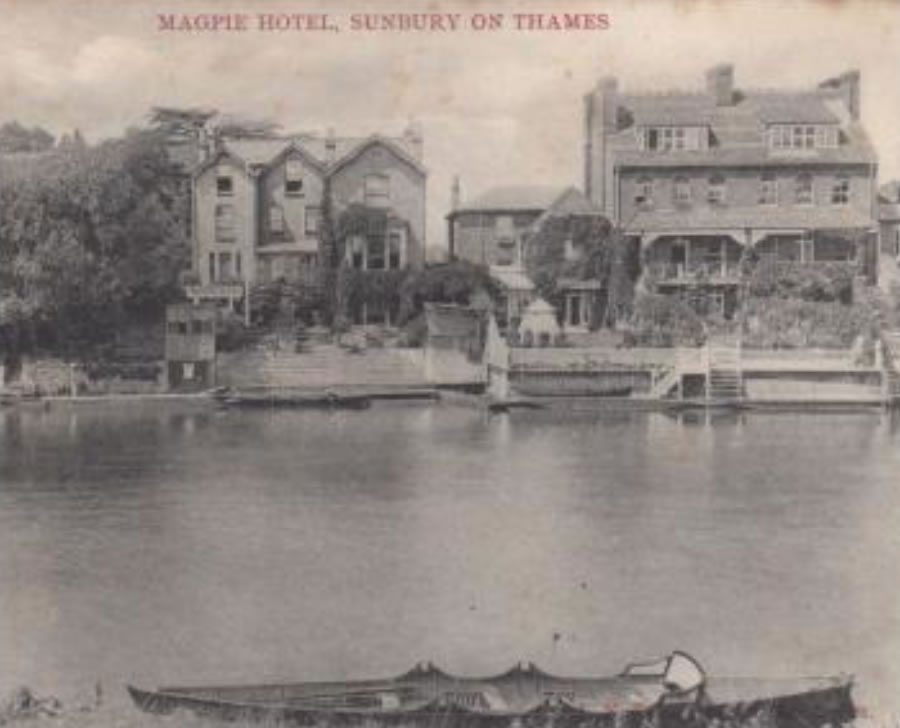To my mind, Sunbury is defined by its pubs. The joys of living along the river are never more evident than when enjoying a pint alongside it in a pub. Sunbury currently has seventeen licensed premises and at one point had as many as thirty. I took to the Sunbury Library to investigate the history of some my favourites and found ‘A History of Sunbury Pubs’ by Kenneth Y. Heselton to be illuminating and thorough.
The Three Fishes is not only one of Sunbury’s earliest pubs it’s one of the village’s first buildings. However, the structure is unrecognisable from how it originally appeared in the 16th century. The first official mention of The Three Fishes comes in 1665 and there is oddly not another mention of it until 1730. The inn was in fact sold at auction in 1823 in The Flower Pot. It fetched £162.
First mention of The White Horse appears in 1729. The entry described it as the oldest established ex-alehouse in Sunbury excluding the Three Fishes. Originally the pubs brewery company was paid two guineas per year for “making available its convenience for use by the general public”.
The Magpie was the first pub I visited when I turned 18 and one I often return to. Heselton writes that benefited from the expansion of Sunbury as a Victorian Riverside resort and it is one of oldest pubs in Sunbury.
The first recorded mention of the pub was on the 29th April 1729 in the register of Licensed Victuallers for the New Brentford Division. It is perhaps most famous for its association with The Grand Order of Water Rats. The Magpie is where the Water Rats originally hosted their meetings which now apparently take place at The Water Rats pub in Kings Cross. The association was founded by Joe Elvin and Jack Lotto who were regulars at the Magpie.
Famous patrons include poet, novelist and activist William Morris and The Duke of Windsor who often came for a drink when titled Prince of Wales. Colloquially at some stage a magpie referred to half a pint. This is perhaps an indication of where the pubs name is derived.
The Phoenix’s first reference comes far later in April 1818. It was originally two premises, two cottages – this is still evident in the brick work and levels of the pub which are inconsistent with one another. The Phoenix is said to be haunted by the ghost of an old woman who killed herself in the original Stonor Cottage. According to Heselton it is possible an entirely different ale house once stood on the site – Heselton writes that the previous business may have been one of Sunbury’s “lost pubs”.
The Flower Pot is said to have been called the Virgin and Child and its sign displayed lilies supposedly as a sign of purity. Heselton deduces from the pubs proximity to the church that the pub is of ancient origin. The first reference to it dates back even before that of The Magpie. It features in the will of a Thomas Winnal dated the 10th of July 1714. The pub is said to have originally been on the south side of the road and did boast a coach house and stable at its rear suggesting it was once a posting house, this has since been demolished.
By Jack Dormer, Sunbury resident, English grad and keen writer

